Duffy's Restaurant in Old Orchard Beach: Nice burger with delicious onion rings!
Southern Maine life Fun Things to do NANCY TIMBERLAKE RE/MAX Shoreline The Common at 88 Middle Street Portland, Maine 04101; (207) 553-7314 ntimberlake@homesinmaine.com
Food, Entertainment, and Arts

Saturday, October 31, 2015
Friday, October 30, 2015
Thursday, October 29, 2015
101 Things I Love About Portland Maine
The Steakhouse on Route one in Wells:
Juicy steaks. big fresh salad, cauliflower w Hollandaise!
All wonderful...
http://www.the-steakhouse.com/Monday, October 26, 2015
101 Things I love about Portland Maine
Looking for all day breakfast joint?
Check out this tasty place in Biddeford,
Wednesday, October 21, 2015
101 Things I Love about Portland Maine
Sunday, October 18, 2015
The Biggest Air Leak in Your House You Don’t Know About
The Biggest Air Leak in Your House You Don’t Know About
- By: John Riha
There’s a gap in your home that’s wasting precious energy and inviting cold air inside — do you know where it is?

Plumbers cut in the subfloor to make room for the drain assembly at the bottom of a bathtub, causing a huge air leak. Image: John Riha for HouseLogic
Have you caulked windows and replaced weatherstripping on your doors? Good for you. But if you think you’ve sealed up air leaks, you’re in for a shock.
The biggest air leak in your home is right under your nose.
Or, underfoot, more accurately.
It’s the hole that a plumber cuts in the subfloor to make room for the drain assembly at the bottom of a bathtub. Because the drain assembly is big, plumbers make way for it by cutting a generous-size hole that gives them some “wiggle room” when connecting plumbing pipes. This big hole often is left open to the space below.
Or, underfoot, more accurately.
It’s the hole that a plumber cuts in the subfloor to make room for the drain assembly at the bottom of a bathtub. Because the drain assembly is big, plumbers make way for it by cutting a generous-size hole that gives them some “wiggle room” when connecting plumbing pipes. This big hole often is left open to the space below.
How You Know If You Have This Bathtub Hole
If you have a first-floor bathroom over a crawl space or unheated basement, you likely have one of these giant energy wasters in your home.
“Having that big hole for the bathtub drain can waste about as much energy as leaving one of your windows open a few inches, all day, every day,” says Allison Bailes III, president of energy consultant firm Energy Vanguard. “The main difference is that you can easily close the window, but most people don’t even know about this other open window.”
And BTW, that hole also is big enough for good-size critters to crawl inside your home!
Best Way to Plug the Leak
“Having that big hole for the bathtub drain can waste about as much energy as leaving one of your windows open a few inches, all day, every day,” says Allison Bailes III, president of energy consultant firm Energy Vanguard. “The main difference is that you can easily close the window, but most people don’t even know about this other open window.”
And BTW, that hole also is big enough for good-size critters to crawl inside your home!
Best Way to Plug the Leak
Plumbers may plug this hole with a wad of loose insulation, but that’s an imperfect solution — fiberglass insulation can sag over time, especially if it gets damp. The preferred method:
1. Crawl under your bathroom to look at the drain assembly from underneath.
2. Patch the hole with pieces of foam board that’s cut to fit around the pipes. Screw them in place.
3. Then seal any gaps with spray foam insulation ($8 per can).
A plumber will do the job, too, but that’ll set you back $100 to $150. Probably worth it when you think about energy savings, comfort, and keeping mice and camel crickets out of your house.
 John Riha
John Riha
has written seven books on home improvement and hundreds of articles on home-related topics. He’s been a residential builder, the editorial director of the Black & Decker Home Improvement Library, and the executive editor of Better Homes and Gardens magazine. Follow John on Google+.
Read more: http://www.houselogic.com/home-advice/insulation/biggest-air-leak-home/#ixzz3ovl9hT7G
Follow us: @HouseLogic on Twitter | HouseLogic on Facebook
Saturday, October 17, 2015
Monday, October 12, 2015
101 Things I Like about Portland Maine
Portsmouth NH has great restaurants and shops including RiRa Irish Pub:
delicious pub fare in fun atmosphere

Tuesday, October 6, 2015
Tips to Clean and Prep Your House for Winter
Tips to Clean and Prep Your House for Winter
- By: John Riha
You’re about to be shut in for the season — here’s how to make sure your home is free of dust and dirt before you hunker down.
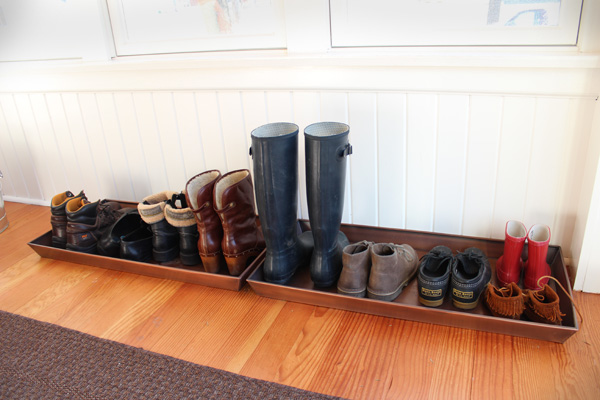
Boot trays by the front door keep wet footwear from soaking your floors. Image: Helen
Why? We’re about to shut ourselves inside for months with all the dirt and grime our houses have gathered during those hot, dusty, open-window days of summer and fall. We’ll be living with indoor air quality that the EPA estimates could be five times more polluted than outdoor air.
But you can breathe easy — we’ve made up a checklist of must-do cleaning jobs that’ll get the dust out, spruce up your interiors for the coming holidays, and make those wintry days healthier — and safer — for you and your family.
Vacuum Dryer Vent
This little chore should definitely be on your list. It prevents lint build-up that can create a fire hazard.
Pull out the dryer as far as the vent pipe allows. Disconnect the vent pipe from the dryer, and clean the outlet hole in the back of the dryer with a shop vac or regular vacuum.
Clean the vent pipe with a dryer snake cleaning tool ($15 to $20). This is a rotary brush attached to a long cable. One end is fitted to the chuck of an electric drill that is used to rotate the cable and the brush.
1. Unscrew the exterior dryer vent cover
2. Feed the rotary brush into the vent opening, turning it on low speed
3. Feed the cable into the vent as far as it will go, then pull it back — don’t stop rotating the cable and brush
4. Repeat from the inside
5. Reconnect the vent, and turn on the dryer to flush the system of loose lint
6. Replace the exterior vent cover
Don’t use this tool on the flexible vent pipe sometimes used to connect the dryer to the vent wall outlet. Instead, remove the flexible pipe completely and use a vacuum with a narrow nozzle to clean out the pipe.
Related: How to Care for Your Washer and Dryer
Wash and Disinfect Garbage Cans and Wastebaskets
But you can breathe easy — we’ve made up a checklist of must-do cleaning jobs that’ll get the dust out, spruce up your interiors for the coming holidays, and make those wintry days healthier — and safer — for you and your family.
Vacuum Dryer Vent
This little chore should definitely be on your list. It prevents lint build-up that can create a fire hazard.
Pull out the dryer as far as the vent pipe allows. Disconnect the vent pipe from the dryer, and clean the outlet hole in the back of the dryer with a shop vac or regular vacuum.
Clean the vent pipe with a dryer snake cleaning tool ($15 to $20). This is a rotary brush attached to a long cable. One end is fitted to the chuck of an electric drill that is used to rotate the cable and the brush.
1. Unscrew the exterior dryer vent cover
2. Feed the rotary brush into the vent opening, turning it on low speed
3. Feed the cable into the vent as far as it will go, then pull it back — don’t stop rotating the cable and brush
4. Repeat from the inside
5. Reconnect the vent, and turn on the dryer to flush the system of loose lint
6. Replace the exterior vent cover
Don’t use this tool on the flexible vent pipe sometimes used to connect the dryer to the vent wall outlet. Instead, remove the flexible pipe completely and use a vacuum with a narrow nozzle to clean out the pipe.
Related: How to Care for Your Washer and Dryer
Wash and Disinfect Garbage Cans and Wastebaskets
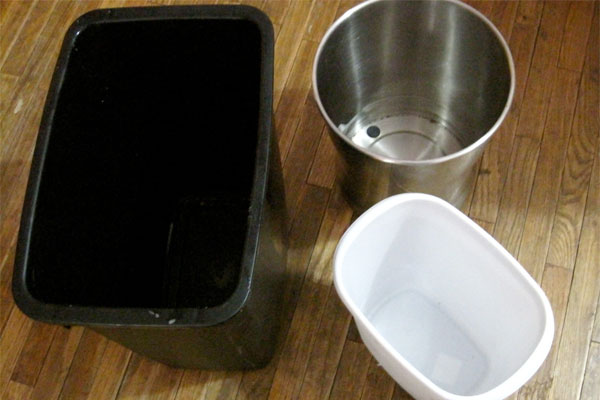 Image: A Little Wife’s Happy Life
Image: A Little Wife’s Happy LifeYou’re going to be shut in all winter with these little germ havens, so now’s a good time to clean them thoroughly. Take them outside where you can blast the insides with a garden hose, then add disinfectant.
Regular bleach is an effective disinfectant (one part bleach to six parts water) but we much prefer environmentally safe undiluted hydrogen peroxide or vinegar mixed 50/50 with water. Caution! Don’t mix hydrogen peroxide with vinegar — the result is harmful peracetic acid.
Let the garbage cans sit for an hour, then pour out the contents and scrub the insides with a stiff bristle brush to remove any residue. Rinse and, if possible, let the wastebasket dry in direct sunlight, which helps eliminate bacteria.
Wash and Disinfect Toilet Brush Holders
Take the holder and the brush outside, and spray wash thoroughly with a garden hose. Immerse the holder and brush in a bucket of hot water mixed with one of these solutions:
- 1 part bleach to 6 parts water
- 2 to 3 cups of environmentally friendly washing soda crystals
- A 50/50 mixture of vinegar and water
Let everything sit in the solution for a couple of hours, then rinse the holder and brush with a hose and place in direct sunlight to dry.
Turn Over Furniture and Vacuum the Bottoms
Turn Over Furniture and Vacuum the Bottoms
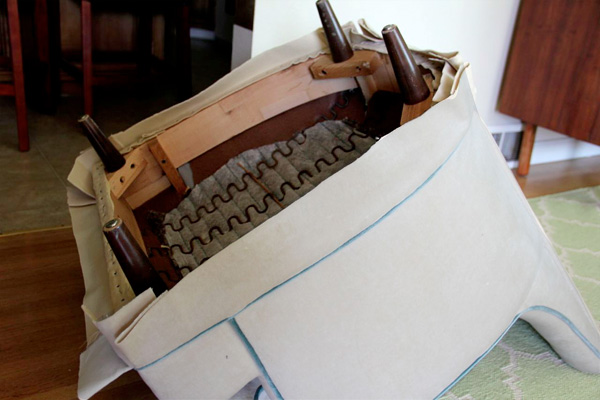 Image: Jess McGurn
Image: Jess McGurnYou might shift furniture around so you can vacuum the floor, but there’s another side to the story — the underside.
Tilt upholstered chairs and couches all the way back (much easier with two people) to expose the bottoms. The dust covers tacked underneath furniture can catch dreck and dust bunnies, so vacuum them off, being careful not to press too hard on the fabric.
Change Furnace Filters
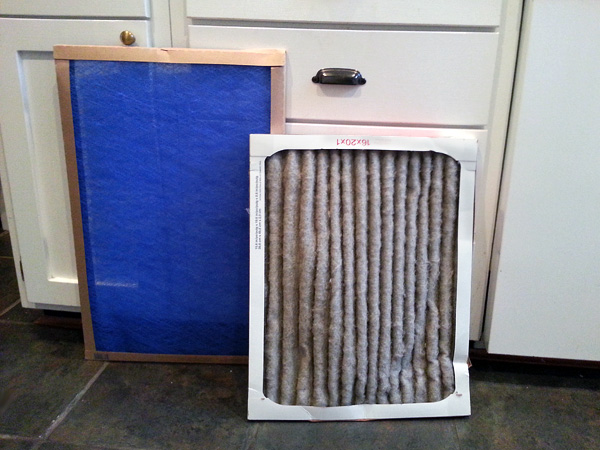 Image: Liz Foreman for HouseLogic
Image: Liz Foreman for HouseLogicYou’ve heard it before, but change your HVAC filters! These dust-catching wonders keep particulates out of your air, making it easier on your floors, furniture, HVAC system, and lungs. Change at least every 60 days.
Air filters for furnaces are rated by level of efficiency. The higher the rating, the better the filter is at removing dirt, mold spores, and pet dander.
Filters are rated one of two ways (you’ll see the ratings on the packaging); higher numbers mean better efficiency, but there’s a point of diminishing returns — some filters with extremely high ratings also restrict air flow, making your HVAC work so hard that the system heats and cools inefficiently.
- Minimum efficiency rating values (MERV) for filters range from 1 to 16, but 7 to 13 is typical for households (14 and up are used in hospitals)
- Microparticle performance rating (MPR) range from 300 to 2400
Cheap filters cost about $2, but you’re better off paying $12 to $17 for a pleated filter with a 1250 MPR, or $20 to $25 for a filter rated 2400.
Clean the Tops of Doors, Trim, and Artwork
Clean the Tops of Doors, Trim, and Artwork
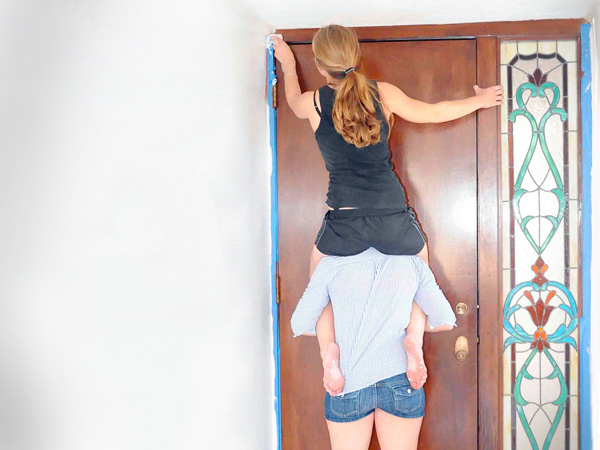 Image: Daniela Mellen
Image: Daniela MellenTables and countertops aren’t the only household items with horizontal surfaces. In fact, just about everything in your house except Rover’s tennis ball has some kind of horizontal surface where dust and dirt will nestle, often unnoticed. You’ll want to clean the top horizontal edges of:
- Interior doors
- Trim, including baseboards and chair rails
- Artwork and mirrors
- Electrical wall plates
- Wall-mounted smoke detectors, CO detectors, and thermostats
- Upper kitchen cabinets
- Light bulbs and light fixtures
- Computer monitors
- Books on shelves
Vacuum Behind the Fridge
If we’ve told you once…
OK, you get it. Your fridge needs to be cleaned periodically so that it operates at peak efficiency. Ignore this chore and face another $5 to $10 per month in utility costs. Worst case: a visit from an appliance repair pro who’ll charge $75 to $150 per hour!
The object is to clean the condenser coils. Here’s how:
If we’ve told you once…
OK, you get it. Your fridge needs to be cleaned periodically so that it operates at peak efficiency. Ignore this chore and face another $5 to $10 per month in utility costs. Worst case: a visit from an appliance repair pro who’ll charge $75 to $150 per hour!
The object is to clean the condenser coils. Here’s how:
If the condenser coils are on the bottom of the fridge, then you’ll need to clean them from the front of the unit.
- Take off the bottom faceplate to expose the coils.
- Clean dust using a condenser-cleaning brush ($8) or a long, thin vacuum attachment made for cleaning under refrigerators ($14).
You still should pull your refrigerator all the way out and vacuum up dirt and dust that accumulates in back of the unit. Unplug it while you work on it.
Put down a piece of cardboard so that grit under the wheels doesn’t scratch your flooring.
If the condenser coils are on the back of the refrigerator, then pull the unit out completely, and unplug it while you work on it.
Put down a piece of cardboard so that grit under the wheels doesn’t scratch your flooring.
If the condenser coils are on the back of the refrigerator, then pull the unit out completely, and unplug it while you work on it.
- Brush or vacuum the coils to clean them, and clean up any dirt and dust on the floor.
While you’re at it, check to make sure your freezer vents are clear. Freezers circulate air to reduce frost, but piling up too much stuff in front of the little grill-like vents inside your freezer blocks their business.
Related: How to Care for Your Fridge
Winterize Your Entry
Related: How to Care for Your Fridge
Winterize Your Entry
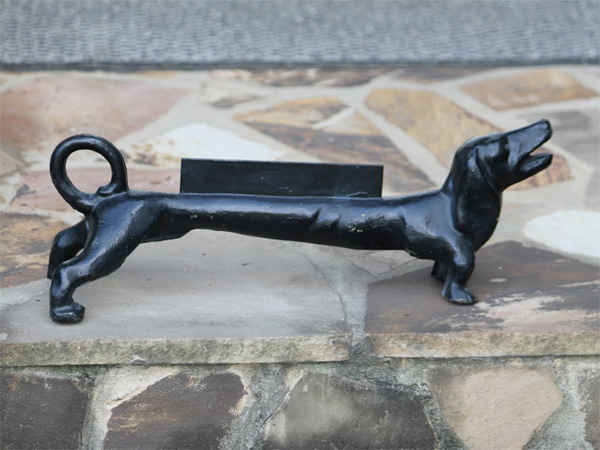 Image: Audrey Fish Pfeifer
Image: Audrey Fish PfeiferKeep winter’s slush and gunk at bay by making your entryway a dirt guardian.
- Get a boot scraper ($19 to $35)
- Add a chair or bench for taking off boots, and have a boot rack for wet footwear
- Put down a tough coir outdoor doormat ($30 to $190) for cleaning footwear
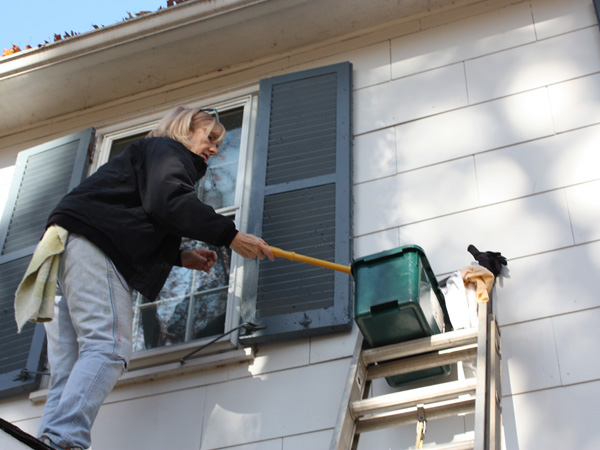 Image: Jo @ Let’s Face the Music
Image: Jo @ Let’s Face the MusicBy some estimates, dirty window glass cuts daylight by 20%. That’s a lot less light coming in at a time of year when you really need it to help chase away winter blues.
Clean windows inside and out with a homemade non-toxic solution:
- 1/4 cup white vinegar
- 1/4 to 1/2 teaspoon eco-friendly dish detergent
- 2 cups water
Wipe clean and polish using microfiber cloths.
Clean Ceiling Fan Blades
Those big blades on your ceiling fan are great at moving air, but when they’re idle they’re big dust magnets — dust settles on the top surfaces where you can’t see it.
Out of sight maybe, but not out of mind. Here’s an easy way to clean them: Take an old pillowcase and gently cover a blade. Pull it back slowly to remove the dust. The dust stays inside the pillowcase, which prevents dust from flying all over.
Related: How to Keep Things Cleaner Longer
Clean Ceiling Fan Blades
Those big blades on your ceiling fan are great at moving air, but when they’re idle they’re big dust magnets — dust settles on the top surfaces where you can’t see it.
Out of sight maybe, but not out of mind. Here’s an easy way to clean them: Take an old pillowcase and gently cover a blade. Pull it back slowly to remove the dust. The dust stays inside the pillowcase, which prevents dust from flying all over.
Related: How to Keep Things Cleaner Longer
 John Riha
John Riha
has written seven books on home improvement and hundreds of articles on home-related topics. He’s been a residential builder, the editorial director of the Black & Decker Home Improvement Library, and the executive editor of Better Homes and Gardens magazine. Follow John on Google+.
Read more: http://www.houselogic.com/home-advice/seasonal-maintenance/winter-cleaning/#ixzz3nqdwpeok
Follow us: @HouseLogic on Twitter | HouseLogic on Facebook
Subscribe to:
Posts (Atom)






























